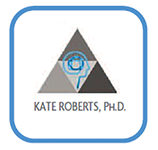What makes learning exciting? The Question. If you start with the question, you can never go wrong. There are three basic steps to the learning process – any learning process. It doesn’t matter whether we are talking about students in a school; the scientists in the laboratory; or the parent and child at the baseball game. It’s all about asking and answering questions.
Step 1: The Question
It all starts with the question. Ask questions. Then ask more questions. And then, perhaps, consider asking some more questions. But the most important questions are those that come from your child. It doesn’t matter where you are or what you are doing. For example, if you are watching a movie together, go beyond, “What did you like about the movie?” Instead ask, “Do you think that Belle made the right choice moving into the castle with the Beast?” It’s more important, however, to help your child ask his or her own questions. Often this happens by NOT asking your child questions. Instead, listen for whatever comments that your child makes about the movie. Then follow up your child’s comment with a comment of your own – one that might be unexpected, challenging or demanding in some way. Your child might come up with his or her own question.
Child: The Beast was stupid to give Gaston a second chance at the end of Beauty and the Beast.
Parent: Yeah, sometimes acting out of compassion can get you in trouble.
Child: What’s compassion?
Step 2: Engage, Explore, Experiment (Make Mistakes)
Once we have a question, it’s time to engage it. How can we answer this question? Now it’s time to do something. It’s time to explore, engage and play. It’s time to experiment with different answers. Indeed: It’s time to court mistakes, and learn from them. If it’s a factual question, we can go to the internet or the library. We can ask someone who knows. We can look up a word in the dictionary. But even this is an exploratory process. Children who consult the dictionary often think that the first definition is the “correct one”. Not so fast! Read them all. Which seems appropriate for the context? Even checking facts requires engagement, exploration and experimentation. If it’s a scientific question, try some easy experiments. Try out a line of reasoning. Even if you, as the parent, don’t know the answer!
Child: Mommy, why does a boat float?
Mom: Hmmm. Here is a rock, let’s see what happens when we throw
it in the pond.
Child: It sinks.
Mom: Here is a leaf. Let’s see what happens now…
If the question lends itself to discussion, we can engage in some give-and-take.
Mom: Compassion is when we act out of care for someone else. It’s like feeling sympathy for someone. You do something for someone just because they need it. But that sometimes backfires.
Child: But the Beast didn’t like Gaston!
Mom: Do you have to like someone to care about them?
Step 3: Reflect on the Experience
When we learn something new, we are actually not fully aware of what we have learned! This may sound strange, but it is true. So, it’s usually not enough simply to learn something new. To really understand what we’ve learned, it’s important to reflect upon it. This can be as simple as asking: “So, what did you take away from our discussion?” or “What did you learn from that?” If you do this, you may be surprised at what your child might say. Sometimes, it will be clear that your child understands less than what you think he or she does. Other times, he or she will surprise you with a response that you did not expect. Either way, the process of reflecting upon learning is what allows us to make our learning conscious to ourselves, and to make connections between and among the new ideas that we have created.

















